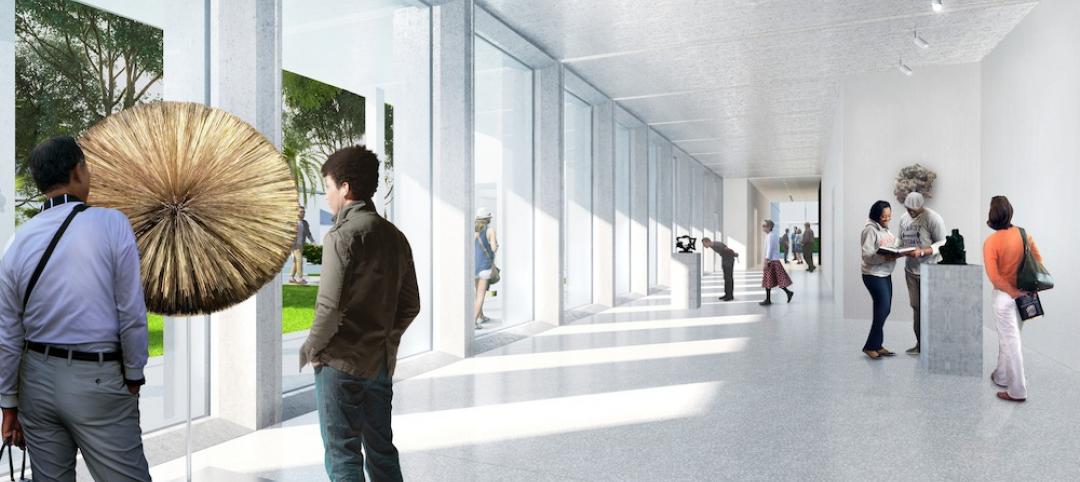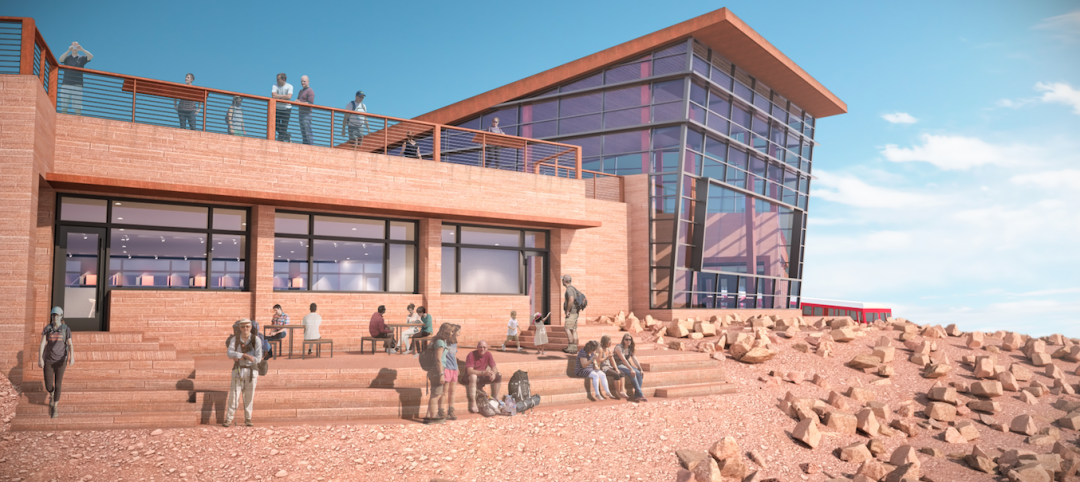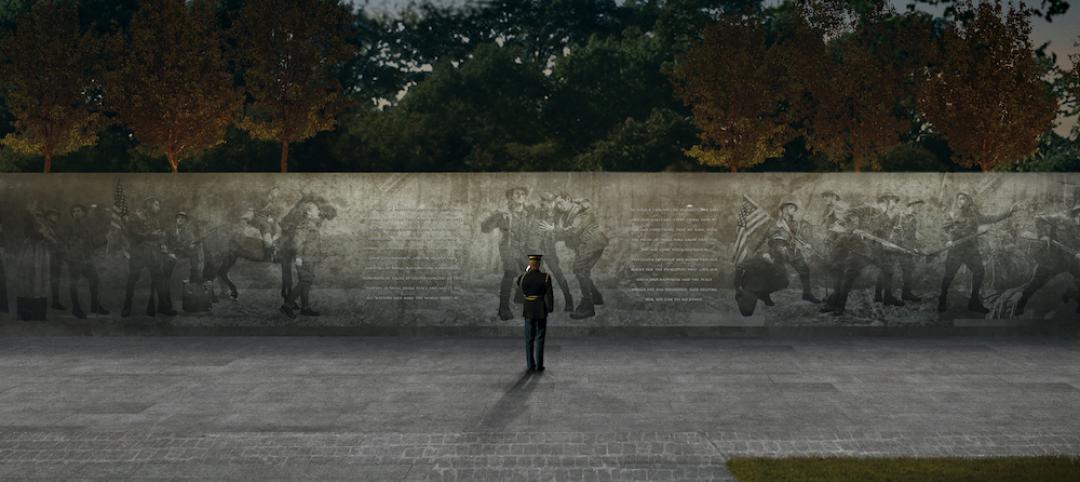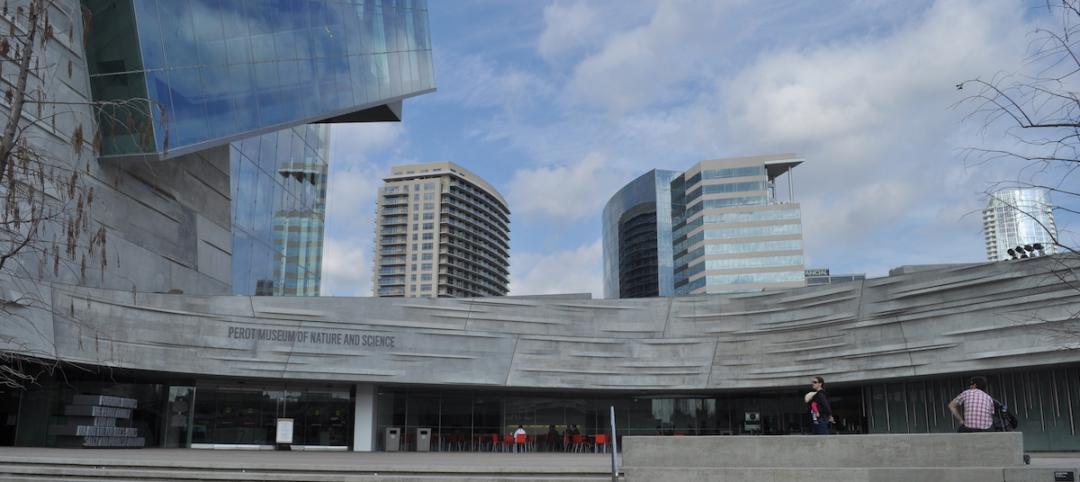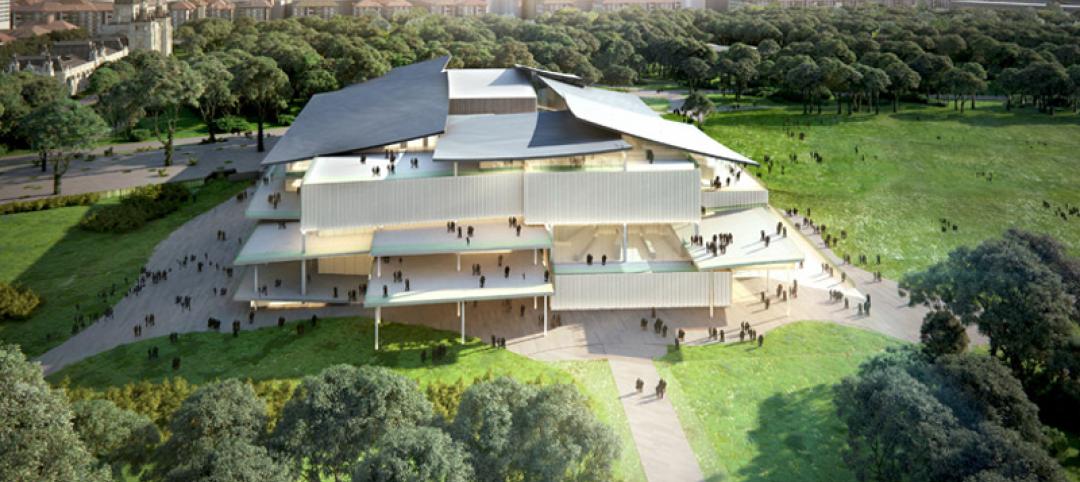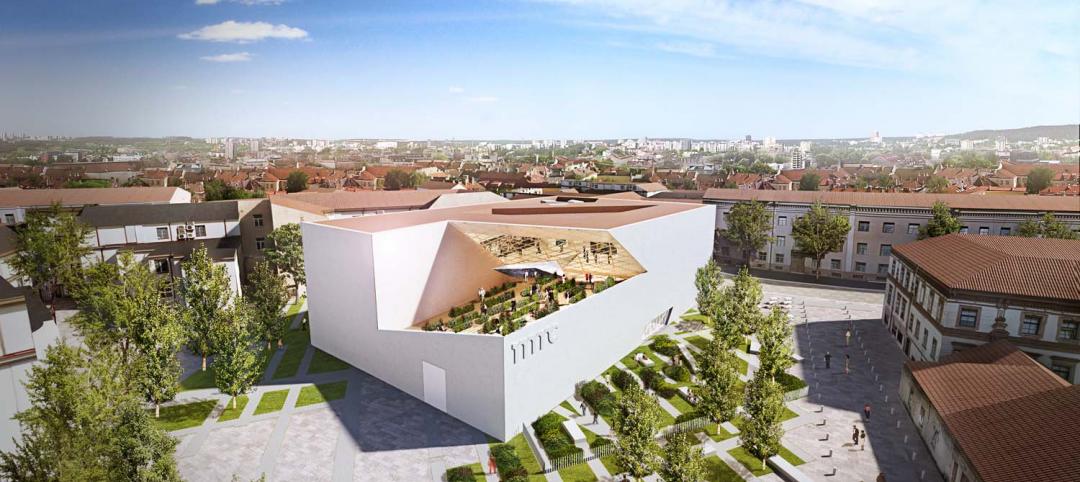 |
|
Design for the Holocaust and Human Rights Center of Maine is representative of a flower in bloom, complete with petals that shelter the circular exhibit space. The center connects to the Bennett Katz Library. Photos: Shepley Bullfinch |
The Holocaust and Human Rights Center of Maine was founded in 1985, but the organization didn't have a permanent home until May 2008. That's when the Michael Klahr Center, which houses the HHRC, opened on the Augusta campus of the University of Maine.
The design, by Boston-based architects Shepley Bulfinch Richardson & Abbott, was selected from among more than 200 entries in a university-sponsored competition. The winning project, a conceptualized flower in bloom, was created by a group of young architects at Shepley Bulfinch who imagined four petal-like forms growing out of the ground—symbolic of the seeds of democracy and freedom.
“There are still so many human rights issues out there today, so the flower blossoms are representative of new life coming back when conditions are right,” says Angela Watson, a principal at Shepley Bulfinch and mentor to the young architects.
 |
|
The Building Team utilized BIM to check the demands and capabilities of the petal forms and determine the proper petal radii, which cut the cost of bending the shell steel by half. The finished petals are clad in copper. |
It was Watson who introduced the HHRC project to the firm. When she learned of the University of Maine's design competition back in 2004, she organized a separate in-house competition as a way to give the firm's young bloods a chance to “flex their design muscles,” as she put it. The entire firm voted, and the two winning designs were entered in the HHRC competition, with one taking the prize.
At 6,300 sf, the Michael Klahr Center isn't a large building. The space is apportioned throughout a single level that includes a circular exhibit space in the center as well as offices and education space. However, its sculptural forms were complex enough for the Building Team, which included structural engineer Simpson Gumpertz and Heger of Waltham, Mass., to experiment with BIM.
Not a big deal now, but BIM was fairly new in 2004 when design began, turning this project into a BIM pilot for Shepley Bulfinch. The Building Team used BIM to explore many different construction options, including cast-in-place concrete, glulam wood beams, and steel. They found that cast-in-place would push the project over the $1.8 million budget cap and glulam would make the petals too thick. Their BIM model helped them decide that steel framework was the most efficient and economical solution.
Steel construction enabled some portions of the building to be shop fabricated, which saved time. General contractor Wright-Ryan Construction, Portland, Maine, cut construction time even more by framing large portions of the small building using wide-flange noncomposite steel beams and columns, with the lateral load system consisting of structural steel concentrically braced frames with hollow structural section (HSS) brace members.
But it was the complex design of the steel petals that really tested the Building Team's mettle.
The SGH structural engineering team developed an innovative structural system that consisted of a grid of HSS sections using curved HSS 8x8s as the ribs along the meridians of the spherical sections of the petals and straight HSS 4x4s along the parallels of latitude of the pedals. The HSS grids, braced and moment-connected in-plane, allowed the petals to act as shells. Three-inch-diameter structural steel columns pierced the petals and provided additional structural support. The BIM model enabled the team to check the demands and capabilities of the petals and determine the proper petal radii, which cut the cost of bending the shell steel by half.
Wood-framed box beams (made of 2x4s and plywood) were incorporated into the spans between the rib framing; this allowed the four petals to be sheathed in plywood, over which the standing seam copper roof panels were installed.
“This building is the perfect story,” says Watson. “It's a unique design from a young, talented team that overcame challenges of budget, schedule, and material and created a place that will have lasting impact.”
Related Stories
The High Line | Feb 24, 2016
The last unused portion of the High Line is set to become a piazza
The piazza replaces an earlier design for the space that called for a bowl-shaped garden.
Museums | Feb 12, 2016
Construction begins on Foster + Partners’ Norton Museum of Art expansion project
The Florida museum is adding gallery space, an auditorium, great hall, and a 20,000-sf garden.
Game Changers | Feb 4, 2016
GAME CHANGERS: 6 projects that rewrite the rules of commercial design and construction
BD+C’s inaugural Game Changers report highlights today’s pacesetting projects, from a prefab high-rise in China to a breakthrough research lab in the Midwest.
Cultural Facilities | Jan 28, 2016
FIRST LOOK: Pikes Peak visitor complex will appear carved into the mountainside, at 14,115 feet
The minimalist structure will provide majestic views of the Rocky Mountains for the 600,000-plus people who visit the summit each year.
Architects | Jan 28, 2016
25-year-old architect wins competition for World War I memorial in Pershing Park
Joe Weishaar and sculptor Sabin Howard were selected from among five finalists and over 350 entries overall.
Architects | Jan 15, 2016
Best in Architecture: 18 projects named AIA Institute Honor Award winners
Morphosis' Perot Museum and Studio Gang's WMS Boathouse are among the projects to win AIA's highest honor for architecture.
| Jan 14, 2016
How to succeed with EIFS: exterior insulation and finish systems
This AIA CES Discovery course discusses the six elements of an EIFS wall assembly; common EIFS failures and how to prevent them; and EIFS and sustainability.
Cultural Facilities | Dec 21, 2015
Seven finalists named in Barack Obama Presidential Center design search
ShoP Architects, Renzo Piano Building Workshop, and Adjaye Associates are among the remaining firms that will propose designs for the $500 million archive, library, and museum.
Museums | Dec 3, 2015
SANAA’s design selected for Hungary’s new National Gallery and Ludwig Museum
After months of deliberation, the Japanese firm ultimately won the tie with Snøhetta.
Museums | Nov 23, 2015
Daniel Libeskind unveils design for new Lithuanian modern art museum
Located in the national capital of Vilnius, the Modern Art Center will be home to 4,000 works of Lithuanian art.



